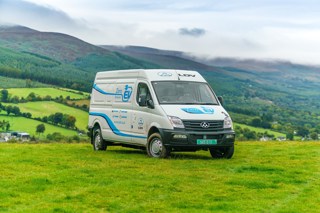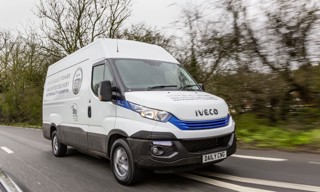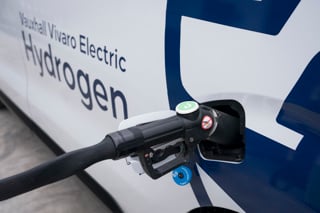Fleets are holding off procurement decisions on alternative fuel large vans because training is required to drive them and the Government hasn’t actually finalised the training course.
The authorities have said standard category B driving licence holders will be permitted to drive 4.25-tonne alternatively fuelled vans, but only after completing a Government-approved training course.
This will enable vehicles to be driven on a Category B (car) licence, the same as vans up to 3.5 tonnes, rather than requiring a C1 licence (<7.5 tonnes). It also means alternative fuel van drivers are exempt from operator licensing requirements.
Fleets will then be able to switch to electric, range extender, plug-in hybrid, hydrogen fuel cell, compressed natural gas and liquefied petroleum gas vans where the wright exceeds 3.5 tonnes without having to invest in drivers getting a C1 licence.
The van must be used to transport goods and it only applies within Great Britain (but not Northern Ireland).
James Firth, head of road freight regulation at the Freight Transport Association, said the delay to introducing training courses is holding up procurement decisions.
He said: “I have put it quite bluntly to the Office for Low Emission Vehicles (OLEV) that training courses should have been sorted before legislation was introduced. We now have members that are holding off buying decisions as a result.”
The Department for Transport (DfT) changed the rules on licencing for alternative fuel vans because battery packs and the weight of the technology was pushing vehicles over the 3.5-tonne limit.
The Government has told the FTA it is in the closing stages of finalising a syllabus that will require five hours of training, with a mix of practical and theory. The DfT said training will include vehicle handling techniques when driving a loaded alternative fuel van, refuelling alternative fuel types and safe loading of alternative fuel vans.
A DfT spokesman told Commercial Fleet it is liaising with industry to make it easier and cheaper to own and run electric vans. “We have worked closely with training registers to develop a syllabus and are developing a system to enable drivers to prove they have completed the required training,” he said.
Training will be carried out by the National Register of LGV instructors or the National Vocational Driving Instructors Register. The DfT said it will be up to fleets and drivers to satisfy themselves they are meeting the legislation’s requirements.
It added that more information about training courses would be available “in due course”.
Firth understands that, as well as finalising a syllabus, deciding how the qualification will be demonstrated - whether it can be added digitally as part of a licence check or whether it will be a paper certificate – is also a factor in the delay.
Firth expects the paper certificate to be the more likely option, with Category B drivers expected to present the document for inspection on request from the police.
LDV’s electric EV80 van and chassis cab, as well as the Iveco Daily Blue Power (pictured) and BD Auto eDucato would all be able to be driven by those that go on an approved training course.
Chris Jones, BD Auto head of sales, said the lack of DVSA-approved training courses is becoming an issue for fleets.
He explained: “We put in a lot of effort, as did many other stakeholders, into the consultation around the derogation process and it was really positive that the legislation went through last July. However, we’re still waiting for details on training and we have customers and build orders waiting. It’s becoming an issue for customers that want to train drivers in advance of vehicles being delivered.”
The DfT decided to extend the weight limit to 4.25 tonnes on alternatively fuelled vans as a way of helping fleets make the switch away from diesel, particularly for inner city last mile delivery fleets.
Plug-in van sales are in desperate need of a boost. Latest OLEV figures show there have been slightly more than 6,000 plug-in van grant applications since its introduction in 2012. This equates to 1.7% of the total light commercial vehicle market of 357,325 units from 2018, according to Society of Motor Manufacturers and Traders data.





















Login to comment
Comments
No comments have been made yet.